
March 29, 1991
Alas, poor First. Considering that all their publications will be of material that has been seen before–reprints of Lone Wolf & Cub, or the stories that have been around for decades in Classics Illustrated–they should, at the very least, change their name to “Second.” It would be truth in advertising.
Actually, First Comics maintained truth in advertising for longer than most. The line, when first started up years ago with such publications as Warp, promised to provide comics that were significantly different from the standard superhero fare.
By and large they have succeeded in that for longer than anyone could have anticipated. Other “independent” companies have come and gone in the time that First started up; or survived by publishing superhero titles distinguishable from the mainstream only by profanity and nudity; or actually thrived through the use of media tie-in comics.
First was going to challenge the “Big Two” head-to-head, and eventually surpass them. Didn’t happen. Hasn’t happened for any of the Indys. The only publisher who is probably pulling in as much money as Marvel or DC would be Mirage, and that’s mostly from licensed material.
To me, the writing was on the wall as far back as Dreadstar #41, my first issue of the book. I went to comic stores in my neck of the woods to try and find it when it hit the stands, and was unable to. Five stores, and no one carried it. Most didn’t carry First comics at all.
One retailer claimed that he had used to carry First comics when they were only publishing a couple of titles, and that those titles sold well. But when First expanded the line, he stopped carrying all of them–even the ones he’d been selling out–because he figured that they wouldn’t continue to sell.
With First going up against logic like that–not to mention the still prevalent DC/Marvel or nothing attitude of many fans–I was immediately concerned about the long-term health of the line.
My involvement with First came through a source I literally could not refuse–Jim Starlin, one of my first and favorite comic book creators, called me and asked if I would be interested in continuing the adventures of Vanth Dreadstar, the character that he had created ten years ago in Metamorphosis Odyssey.
I was amazed and flattered that Jim would trust me with his best-known creation. I also was going to have the chance to work with an extremely talented newcomer named Angel Medina (who is so terminally polite that after six months he was still calling me “Mr. David.”)
However, once it became public knowledge I would be taking on the book, I was taken aside at different times by various members of the comic industry.
“Watch out for First,” they said. “They take forever to pay, or don’t pay at all. They’ll stiff you if given half a chance.”
Certainly, as it turned out, Dreadstar wasn’t the most profitable book I’d ever worked on. My page rate at First was less than on any other title, and royalties were non-existent. Marvel and DC pay in a week, and First in a month to a month-and-a-half, and sometimes only after repeated calls.
But there are some things you do for other than money. Dreadstar was easily the best-looking book that came out with my name on it. First was unquestionably slow in paying the creators involved, but dámņ, at least money was going into the production end. The color separation and printing process they used was on par with–even surpassed–what the mainstream companies were doing.
I’m not purporting to do a full-blown, all-sides-examined essay on First here. I’ve heard all sorts of things about questionable business practices beyond slow, or even nonpayment. I’m not out to bury First here because, frankly, what’s the point? The monthly, and even three-times-a-year series are gone. So is much of the editorial and business staff. I’m sure there are injured parties out there who are nodding their heads and saying, “Hey, they deserved it.” Who knows? Maybe they did.
All I can say is, from my personal experience, that they were pretty good to me. They were the first publisher–actually, the only publisher to date–to pay my way out to several major comic book conventions.
They brought me out to the Chicago Comic Con several years back and, while there, Rick Obadiah, the publisher of First, took a group of freelancers and distributors out to a White Sox game. A sure way to get my loyalty is to take me to a ball game, but Obadiah did it in style. He rented a skybox, with fully stocked bar, waitress service, TV set, couches, padded seats, etc. I will never forget sitting next to Comics Unlimited head Walter Wang, munching on fried chicken and with the waitress asking if she could get us anything, and saying serenely, “Baseball the way it ought to be.”
Hey, I can be bought.
First Comics also paid my way out to the 1990 San Diego Comic Convention, sending me as one of their “featured guests.” Again, a gesture that was much appreciated.
They only had a few titles there at the end: Dreadstar, Nexus (and spin-offs), Badger, Grimjack, and the newly created Meta 4. But they were good, solid titles with wit and imagination and real characters and an intriguing point of view. The numbers were not impressive–any of them would have been canceled ages ago if they’d been Marvel titles with the kinds of sales they were compiling–but those who did read them were devoted to them.
I’m saddened by it all because First really did start out with such grand intentions. In contrast to other Indys who were wildly erratic in publication schedule, First was assiduously on schedule for so long that, when they finally did blow a shipping date, it was actually news.
But you couldn’t find the books. The large comic stores, sure, they carried them. But there are far more small stores than large, and–from my admittedly informal and unscientific survey–the small stores didn’t carry them. This was probably because they didn’t sell as well as Marvel or DC titles, and why bother taking up rack space with a copy of E-Man when you can devote that same space to the latest spider or bat or mutant title.
Year after year I watched First Comics, which had started out so grandly, shrink and shrink, cut and cut until there was virtually nothing left to cut. When word was sent out that the monthly titles were being cut back to three times a year, First tried to put as much of a positive face on it as possible.
I didn’t see how it could possibly be successful, and said so at the time to the editor. My reasoning was fairly simple–if the books weren’t pulling in enough readers when they were monthly, how could they possibly draw more readers–or even hold on to readers–when they were cut back so drastically. Dropping to bi-monthly is usually enough to kill fan interest. So what would three times a year do?
Well, we saw what it did, didn’t we.
First must have seen it coming. An abortive law suit some years back, claiming unfair trade practices by Marvel, DC and Sparta printing, was the shaking of an angry fist against the wind–a prevailing wind that was blowing very solidly against them. It was the first realization, or First realization, that things might not go as smoothly as initially planned.
When something like this happens, you want to point fingers or find fault. That’s generally the way this country is built: Find the culprit, punish them.
Blame the retailers and distributors who didn’t make the comics more accessible? They’re just making business decisions based on available space and what sells and what doesn’t sell.
Blame the fans who didn’t support the titles? But there’s only so much money to go around, what with the economy drooping and the cover price of comics having gone up and up and up, and up even higher when you factor in all the graphic novels and such.
Blame the Big Two, who are out to fiendishly squash the little guys? Always a good tack to take. Problem is, the Big Two were expanding their line–same as a toy company or cereal company. They were giving the readers what they wanted, and the readers wanted more spiders and bats and mutants more than they wanted more Nexus and Dreadstar.
Blame Saddam Hussein? Notice how First was publishing monthlies until he started giving everyone grief. Then the cutback was announced. Then Hussein got clobbered in the war and virtually the entire line went down. There’s a thought. First was supported by Iraq as…nah. Somehow I don’t think so.
The bottom line is that everything is so tightly knit– publisher to distributor to retailer to fan to publisher again–that there isn’t a lot of room for other fibers to work their way in.
If you have a title you like but your retailer doesn’t carry it, ask him to. Retailers, utilize or start up reserve services (although you should keep a tight rein on credit lines) so that you can order independents and know that you’ll sell what you bought. Distributors, remember the days when you would push titles that were different, rather than play it safe, and you took pride in that? Back in the days when there were a lot of distributors instead of a handful. (I understand, from second-hand sources, that one distributor simply won’t carry titles that don’t bring in large enough orders because it’s not worth processing the paperwork. Shame on him.)
Marvel and DC have set up, from time to time, distribution deals with other publishers or specialized works. Might not be a bad idea to continue that. Everyone benefits from that.
Otherwise, we’re just left with more frustrated publishers shaking their fists against the prevailing winds, and the winds blowing all their grand notions back into their faces.
Peter David, writer of stuff, cannot help but observe that– between his leaving Star Trek and Dreadstar leaving him, this hasn’t been a good few months for titles with the word “star” in them.
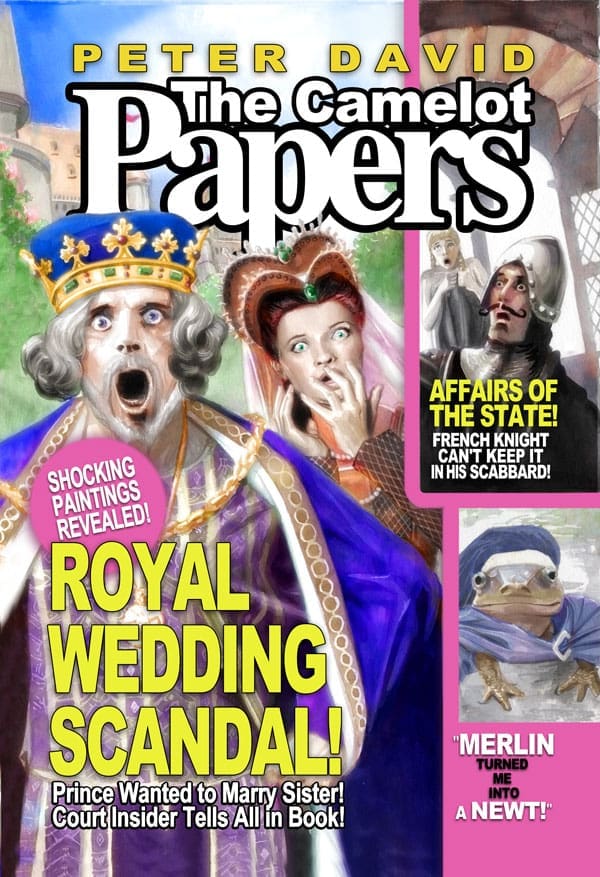
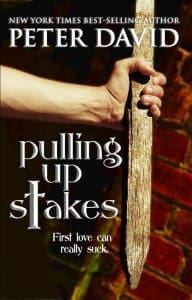
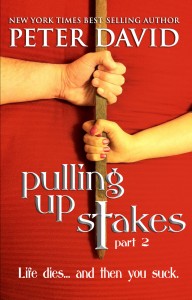
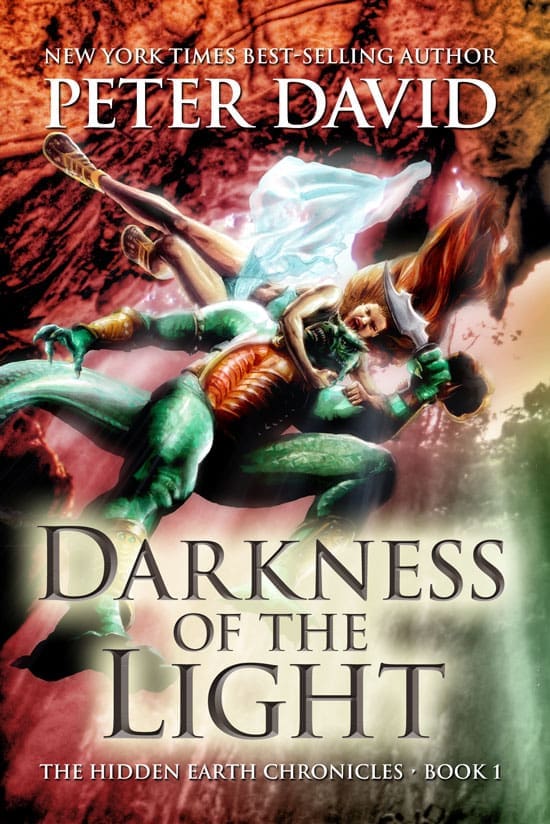
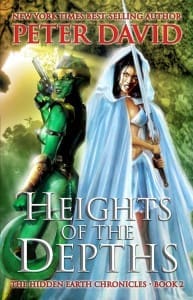
I still have very fond memories of First’s line of books. Warp, Dreadstar, Nexus, Grimjack and Badger. All of them were so completely different from what was being published elsewhere, yet as good as or better than what came from the Big 2. Grimjack was probably one of the first comic books where I finished one and actually was astonished by the ending and felt like I couldn’t make it until the next month to find out what happened. Really good stuff. They are still missed.
It was mostly Badger for me, and some Nexus…I still have the Crossroads prestige format books where various characters teamed up (Badger & Luther Ironheart, Sable & Whisper, etc).
I discovered First when they revived E-Man, who I’d thought was dead with Charlton. (I still think Cuti and Staton’s E-Man is the best claimant for being heir of Jack Cole’s Plastic Man, but like somebody else I digress).
I remember Warp, Grimjack, American Flagg! and Jon Sable Freelance. Wonderful art, and something different from masks, powers, responsibilities and wisecracks.
I always wondered what the story was on their demise. It’s actually disappointing to learn it was mere stupid market economics. At least with misanagement and skulduggery you can pin blame on a person and believe it would have worked out well if only…!
Pfui. The evidence is clear. People who write _must_ do it because they have a passion for it. There’s no other reason for putting up with the grief. Dottie Parker left out a step. After you open the vein, pour in lemon juice.
Thanks for that, brings back many memories. Had a good time working on Nexus back then. To a degree it was much more a calmer atmosphere then working for “the Big Two”. (Then again, working at home is not exactly the biggest ordeal, most of the time). Now if I can only figure out how to get paid for that last issue of Nexus…(Regardless of that, it was still a good group to work for. )
When are we going to hear from PAD again?
“Dreadstar.” Sigh … my all-time favorite comic book growing up. It took me a while to get used to PAD on the title, but he had a good handle on the characters. He had me hooked with the early issues of the Palafox storyline. Pity the early-1990s revival sold so poorly; I’d have liked to have seen more. Starlin talked about doing a new series for a while — even had sketches and a title, “Class Warfare” — but according to recent interviews, the project is pretty dead. Alas.
Paul F. P. Pogue
Without a doubt, DREADSTAR was my favorite comic of the First period. I followed it from the beginning…Metamorphosis Odyssey in EPIC ILLUSTRATED, to the DREADSTAR graphic novel, to Epic Comic’s DREADSTAR monthly, and finally over to First. Man, I loved Vanth and Willow and Syzgy!
Peter’s playfulness was a welcome change to Starlin’s often dour portrayal of the conflicted hero.
I miss those guys…
How about Sable?
Man, it was great writing, great art, and a great story… not much more than you need.
Until Mike left and someone tried to continue writing it.
Hey, on a Buffy note, could “The First” be the ghost of… nahhh… don’t work.
Travis
Well, all I can say is that my store used Previews from the first moment I was a Diamond account (before that, I was with Comics Unlimited Limited), and I brought in anything a customer ordered. I made certain that there was at least one copy of each new First book on the shelf, and the stuff I thought was well done, I promoted (Badger, Nexus, Grimjack, Dreadstar, Lone Wolf and Cub).
If PAD had come into my shop that day (admittedly, it would’ve been a bit of a hike, since I’m in Vermont), he’d have found copies of his work there. It’s a shame that other stores didn’t do the same.
I remember hearing about a comic coming out based on the “Warp” play and being blown away. I had prefered the underground/alternative/indy comics over the big 2. And was very impressed with First’s books.
Imagine my shock when I opened my own comic shop and would watch people buy six copies of spider-man #1 but I couldn’t force feed them an indy book. We gave out free copies of the “Woofa, Woffa, Woffa” issue of Cerebus to EVERY customer one month. Ya wanna guess how many subscriptions we got from those 250 freebies? (Free for the customer, I had to pay for ’em.) About the ONLY success we ever had with promoting the indies was a small following for Howard Cruse after an appearance at our store; and by small I mean five copies might sell in our best month. The economics are the same today as they were twenty years ago. The CUSTOMERS decide what survives, no one else can be blamed.
It’s kind of funny to read this article.
Last month while going though my local comic store’s $1.00 bin I found Dreastar #64. ISSUE 64!!
You have to understand, I discovered Dreadstar at #14 and was hooked. I collected the series from that point on and even hunted down the back issues. I did think the series went into a lull after they defeated Papel, but I hung on. The Peter David took over and breathed new life into the series. I was hooked again.
The point is, I followed the series until the end. But for me that was #63. My comic store never ordered #64. When I asked when it coming out I was told First went out of business, and that was that. I was left hanging for 13 FRICKIN’ YEARS.
Oh I know, I know, I got the Malibu limited series and read the “Oh we go out of our last situation and moved on” explanation and thought I would just have to happy with that. And then I found it. Issue 64. WOW. It was like finding… well I don’t know like finding, I never thought it even existed and I never actually looked for it, but let me tell you, it was good.
Bottom line. I waa very happy with the story and it filled a void within me that I had been carrying for years.
(The only downside is that now, even though I read it first, Captain Marvel #25 now seams like it was just a recycled idea from “Young Scuz” part 3.